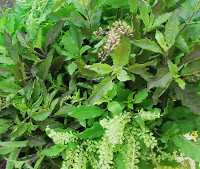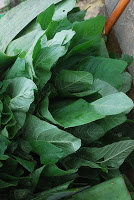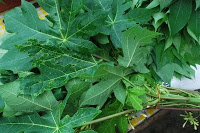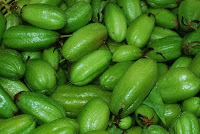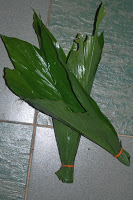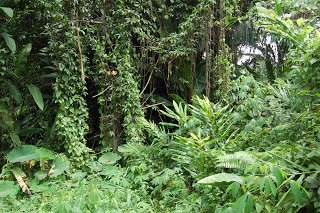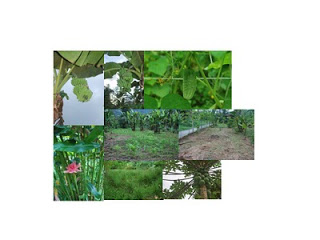All About Durian Fest V
 I am happy that we are again able to hold a Durian Fest and this will be our fifth. We didn’t have one last year because the season fell during Ramadhan. However, this year it seems like we will receive more visitors compared with previous years with the main interest being enjoying “original durian”. I call them as such because these are durians planted from trees decades ago, before we had genetic modified plants and introduction of forced-fruiting, before the drive of commercialization pushed for “standard” fruits. Our aim is to promote local, original durians and the adventure of eating these durians. You never know what you are going to get and there are many varieties. These durians fruit naturally, following their own schedules, not injected with hormones or such items to force them to fruit to meet a commercial desire.
I am happy that we are again able to hold a Durian Fest and this will be our fifth. We didn’t have one last year because the season fell during Ramadhan. However, this year it seems like we will receive more visitors compared with previous years with the main interest being enjoying “original durian”. I call them as such because these are durians planted from trees decades ago, before we had genetic modified plants and introduction of forced-fruiting, before the drive of commercialization pushed for “standard” fruits. Our aim is to promote local, original durians and the adventure of eating these durians. You never know what you are going to get and there are many varieties. These durians fruit naturally, following their own schedules, not injected with hormones or such items to force them to fruit to meet a commercial desire.
The Durian Fest is held during the area’s durian season and we do not collect any durians with names that have alphabets and numbers in them. Some people call them durian kampung but I prefer to refer to them as the original durian. They come in all sizes and many different flavours and flesh shades of colour from cream to bright yellow and if we are lucky, we may get the orange ones too. Part of the excitement is to see what fruit we have when we open one up.
Personally, I love eating durian with lemang made the traditional way. So, we cook lemang for this event so others could enjoy what we enjoy. It takes over four hours to cook it, requiring constant care while it is being cooked. Glutinous rice with fresh coconut milk and a touch of salt placed in bamboo poles of about 2 feet long, slow cooked over wood fire results in a delicious lemang.
Considering that we are eating rich foods high in sugar and carbohydrates, we serve a blend of misai kucing and durian belanda leaves tea with the hope that it will help re-balance our bodies. The tea is made with our natural, uncontaminated river water direct from the source. The tea leaves are grown on the farm so it is organic and natural, no pesticide or herbicides. With the great water, I think the tea just tastes wonderful, hot, warm or cold. We feel happy to be able to enable people to being the water home but everyone has to bring their own containers.
After the rich meal, our farm is open for visitors to walk around and see what we have planted as well as see how we plant them. Through sharing, it gives us an opportunities to exchange ideas and gain
knowledge in a real sense. Sg. Lui flows through the farm and it is about knee-deep so if anyone wants to cool their feet or sit in the river and enjoy the cool water, they can do so.
Our farm produces fruits and vegetables – all chemical pesticide and herbicide free and on this day, we will have whatever is available for sale along with various other items such as seedlings, mulch, potting mix and fertiliser. Our principle has always been to encourage organic or natural vegetable and fruit production as well as recycling of organic waste to produce fertilisers. As such, we will have friends sharing the Bokashi method and goat fertilisers. We will also have visitors who want to share or exchange seeds or seedlings and we will have a table set-up for people to place items for this. I am happy that the fest will be an opportunity to share amongst people with like interest.
All in all, this Durian Fest V is my most ambitious fest to date and I hope that we can manage to make it a wonderful experience for all our visitors.
























